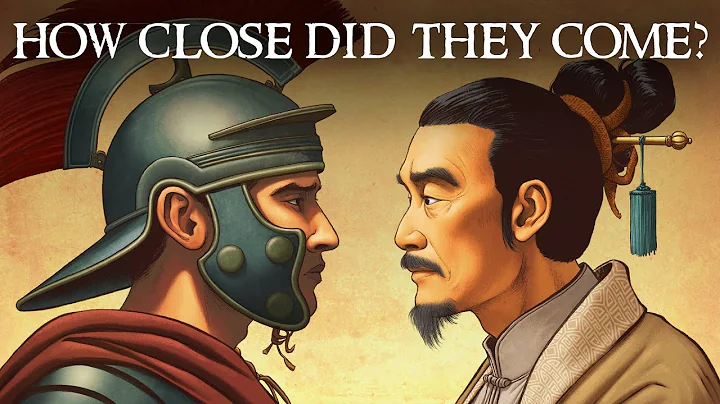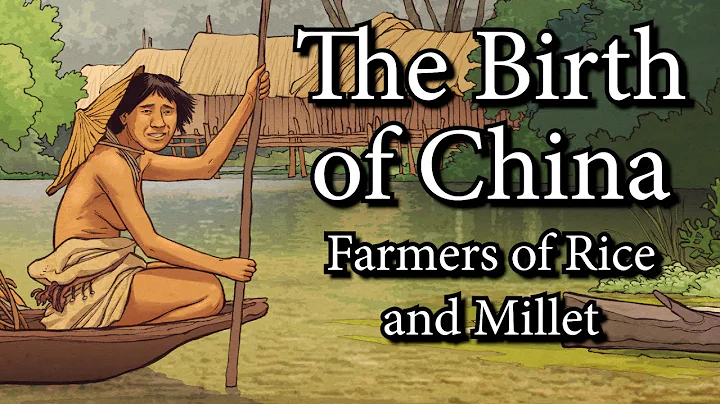China’s history from the birth of Chinese civilization to the present. China has a long history, about 5,000 years since the time of Ji Xuanyuan (also known as Gongsun Xuanyuan) of the Yellow Emperor tribe; about 4,600 years since Three Sovereigns and Five Emperors ; about 4,100 years since Xia Dynasty ; from China The first great unified centralization system dates back to the Qin Dynasty about 2240 years ago.
China has gone through many regime changes and dynasty changes. It was once the most powerful country in the world, with its economy, culture, and technology attracting world attention.
In the prehistoric period of China the two emperors of Yan and Huang were revered as the humanistic ancestors of the Chinese nation.
Around 2070 BC, the Xia Dynasty, the earliest country in China, appeared. The Eastern Zhou Dynasty promoted the development of productive forces and social changes, and formed a situation in which a hundred schools of thought contended.
In 221 BC, Qin Shi Huang established the Qin Dynasty, the first unified authoritarian centralized empire in Chinese history. The Western Han Dynasty further consolidated and developed the situation of great unification.
During the Three Kingdoms, Jin and Southern and Northern Dynasties, China fell into a state of division and separatism. During the Five Husties Rebellion, the trend of foreign ethnic groups integrating into China intensified, and many ethnic groups gradually converged in the conflicts between separate regimes.
During the Sui and Tang Dynasties, the central government had closer ties with the ethnic minorities in the frontier areas, resulting in economic prosperity and highly developed science and technology and culture. During the Song and Yuan Dynasties, diverse cultures collided and blended, and the economy and science and technology developed to new heights. During the heyday of the Ming Dynasty, the social economy was highly developed. At the end of the Ming Dynasty, capitalism sprouted in the Jiangnan region.
In the mid-19th century, after the Opium War, China began to become a semi-colonial and semi-feudal society. The 1911 Revolution of 1911 overthrew the monarchy and established a republic. After Yuan Shikai's death, China entered a chaotic period of warlord rule.
After the National Revolution, Agrarian Revolution, Anti-Japanese War and Liberation War, the People's Republic of China was finally established in 1949. After the Cultural Revolution from 1966 to 1976.
After 1978, China began to implement the policy of reform and opening up, and China's economy developed rapidly. In 2011, China surpassed Japan and became the world's second largest economy.
2. The first dynasty - Xia Dynasty:
The Xia Dynasty (about 2070 BC - 1600 BC) was the first hereditary dynasty recorded in Chinese history books. Among the cultural relics of the Xia Dynasty are a certain number of bronze and jade ritual vessels, dating from the late Neolithic Age to the early Bronze Age.
According to historical records, Yu Chuan was located in Ziqi, which changed the abdication system of primitive tribes and created the first hereditary system in China in the past four thousand years. Therefore, the "family world" in Chinese history began with the establishment of the Xia Dynasty.
The eleven tribes of the Xia clan with the surname Si and the central royal family of the Xia Hou clan have a patriarchal relationship by blood, a political feudal relationship, and an economic tribute relationship. They roughly constitute the core territory of the Xia Dynasty .
Xiaxi starts from the western part of Henan Province and the southern part of Shanxi Province, and reaches the junction of Henan, Shandong and Hebei Provinces in the east, reaches the northern part of Hubei Province in the south, and reaches the southern part of Hebei Province in the north. The geographical center of this area is the area around today's Yanshi, Dengfeng, Xinmi, and Yuzhou in Henan.
It is generally believed that the Xia Dynasty lasted for fourteen generations, with seventeen queens (the rulers of the Xia Dynasty were called "hou" when they were in power and "emperors" after their death), which lasted for about 471 years and were destroyed by the Shang Dynasty . Later generations often called themselves "Huaxia", making it synonymous with China.
3. The last dynasty - Qing Dynasty
The Qing Dynasty (1616-1912) was the last feudal dynasty in Chinese history, with a total of twelve emperors, a total of 296 years. Starting from the time when the country name was changed to and Qing Dynasty , it lasted 276 years in total. It was 268 years since the Qing troops entered the customs and established a national political power.
1616, Nurhachi, the leader of the Jianzhou Jurchen tribe, established the Houjin . In 1636, Huang Taiji changed the name of the country to the Qing Dynasty.
1644 The Ming Dynasty fell. Ming general Wu Sangui who was stationed at Shanhaiguan surrendered to the Qing Dynasty. Prince Regent Dorgon led the Qing army to enter the pass. In the same year, Emperor Shunzhi moved the capital to Beijing. From then on, the Qing Dynasty replaced the Ming Dynasty and became the ruler of the country.
In the following more than twenty years, the regimes of Dashun , Daxi , Nanming were put down. Later, he put down the rebellion of the Three Feudatories, unified Taiwan under the Zheng Family, and gradually took control of the country.
The three dynasties of Kangxi, Yongzong and Qianlong reached their peak. During this period, China's traditional society achieved unprecedented development achievements. In the " Kangxi and Qianlong Dynasties " in the early Qing Dynasty, the population increased, land was cultivated, products were abundant, and the borders were peaceful. The production methods and social life of the small-scale peasant economy were relatively prosperous and stable, and the comprehensive national strength was far better than that of the Han and Tang Dynasties.
After the Opium War, many countries were invaded by foreign powers, resulting in serious loss of sovereignty and territory. It also began to explore modernization and carried out modernization reforms such as the Westernization Movement and the Reform Movement of 1898.
The Sino-Japanese War of 1894 and The Eight-Power Allied Forces' Invasion of China War further deepened the national crisis. In the late Qing Dynasty, China was completely reduced to a semi-colonial and semi-feudal society.
On February 12, 1912, Beiyang Minister Yuan Shikai induced Qing Emperor Puyi to abdicate, and issued an abdication edict to realize the republic of the five ethnic groups, and the Qing Dynasty ended.

Chinese dynasty order list: Xia, Shang, Zhou, Qin, Han, Three Kingdoms, Jin, Five Hu and Sixteen Kingdoms, Southern and Northern Dynasties, Sui, Tang, Five Dynasties, Ten Kingdoms, Song, Liao, Xixia, Jin, Yuan, Ming, Qing .
Historical dynasty songs
The beginning of the Three Sovereigns and Five Emperors, passed down by Yao, Shun, and Yu;
The Xia, Shang and Western Zhou Dynasties, and the Eastern Zhou Dynasty were divided into two periods;
The Spring and Autumn Period and Warring States unified the Qin and Han Dynasties;
Three parts were Wei, Shu and Wu, and the two Jin Dynasties were followed;
The Southern and Northern Dynasties coexisted, After the Sui and Tang Five Dynasties;
After the Song, Yuan, Ming and Qing Dynasties, the dynasty was now complete.
Time and order of Chinese historical dynasties
Xia Dynasty: about 2029 BC - about 1559 BC, total: 471 years
Shang Dynasty: about 1559 BC - about 1046 BC, total: 438 years
Zhou Dynasty : From about 1046 BC to 256 BC, it was divided into the Western Zhou Dynasty and the Eastern Zhou Dynasty. The Eastern Zhou Dynasty was further divided into the Spring and Autumn Period and the Warring States Period. Total: 867 years
Qin Dynasty: 221 BC - 206 BC, 221 BC King of Qin Yingzheng unified the six countries and was the first emperor. Total: 16 years
Western Chu: 206 BC - 202 BC, Xiang Yu was the overlord of Western Chu, total: 5 years
Western Han Dynasty: 202 BC - AD 8 years, Han Gaozu Liu Bang, a total of: 210 years
New Dynasty: the twelfth lunar month of 8 AD - October 6, 23 AD, the new Taizu Jianxing Emperor Mang, a total of: 16 years
Xuanhan : 23 AD 25 years, Emperor Gengshi of Han Liu Xuan, total: 3 years
Eastern Han : 25-220 AD, Emperor Guangwu of Han Liu Xiu, total: 196 years
Three Kingdoms: 220-280 AD, Wei, Shu, Wu's three pillars stood together, totaling: 61 years
Jin Dynasty : 265-420 AD, divided into Western Jin (265-316), Eastern Jin (317-420), total: 156 years
Southern and Northern Dynasties: 420-420 AD 589 years, total: 170 years
Sui Dynasty : 581 AD - 618 AD, Sui Emperor Wen Yang Jian, total: 38 years
Tang Dynasty: 618 - 907 AD, Tang Gaozu Li Yuan , total: 290 years
Five Dynasties: 907-960 AD, Later Liang, Later Tang, Later Jin, Later Han, Later Zhou Dynasty, total: 54 years
Ten Kingdoms: 891-979 AD, total: 89 years
Song Dynasty: 960-1279 AD Years are divided into the Northern Song Dynasty (960-1127 AD) and the Southern Song Dynasty (1127-1279 AD), totaling: 320 years
Yuan Dynasty : 1271-1368 AD, Yuan Taizu Borji Jin·Temujin , Total: 98 years
Ming Dynasty: 1368-1644 AD, Ming Taizu Zhu Yuanzhang, total: 277 years
Qing Dynasty: 1644-1912 AD, Qing Taizu Aixinjueluo Nurhachi, total: 268 years






















